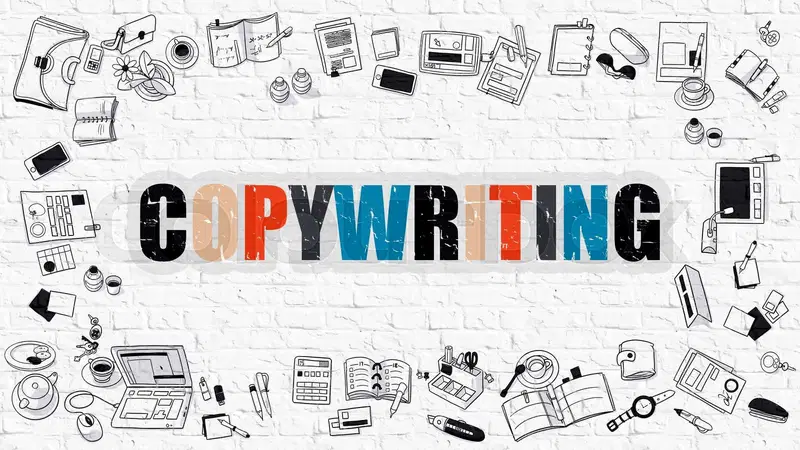Hey man! Believe it or not, the words you use have the power to make or break your marketing campaigns. Compelling copy can entice, persuade, and ultimately convert your audience into loyal customers. But crafting effective copy isn’t always easy. It’s a delicate balance of art and science, requiring a deep understanding of your target audience and their motivations.
In this blog post, we’ll delve into the secrets of persuasive copywriting, revealing proven techniques and strategies that can help you maximize your profits and create a flood of clicks and conversions. Get ready to unlock the power of words and watch your business thrive!
Unleash the Power of Buyer Personas: The Key to Connecting with Your Audience
Imagine trying to hit a target in the dark. You wouldn’t stand a chance, right? The same principle applies to copywriting. Without a clear understanding of who you’re talking to, your message will fall flat.
That’s where buyer personas come in. These semi-fictional representations of your ideal customers provide a roadmap for crafting targeted and resonant copy. By understanding their demographics, goals, pain points, and motivations, you can tailor your message to speak directly to their needs and desires.
Think of it this way: you wouldn’t use the same language to sell a tech gadget to a Gen Z gamer as you would to a senior citizen looking for simplicity. By creating detailed buyer personas, you can ensure your copy resonates with the right people, increasing your chances of conversion.

The Persuasion Trifecta: Mastering the Art of Influence
Now, let’s dive into the nitty-gritty of persuasive writing. There are three fundamental techniques that can make your copy irresistible:
1. Ethos: Building Trust and Credibility
Think of your favorite brands. What makes you trust them? Chances are, it’s their reputation, expertise, and values. Ethos is all about establishing your credibility as a reliable and trustworthy source. Showcase your experience, highlight positive customer testimonials, and demonstrate your commitment to ethical practices.
2. Pathos: Appealing to Emotions
Humans are emotional creatures. We make decisions based on how we feel, not just cold logic. Pathos leverages emotional appeals to connect with your audience on a deeper level. Use storytelling, vivid imagery, and relatable experiences to evoke emotions that resonate with your target market.
3. Logos: The Power of Logic and Reason
While emotions play a significant role in decision-making, logic and reason still hold sway. Logos appeals to your audience’s rational side by presenting facts, statistics, and evidence to support your claims. Back up your statements with data, research, and logical arguments to demonstrate the value and effectiveness of your product or service.
Pro Tip: Don’t limit yourself to just one technique! The most effective copy weaves together ethos, pathos, and logos to create a compelling and persuasive narrative.
Crafting Headlines That Stop Scrollers in Their Tracks
In the digital age, attention spans are shorter than ever. You have mere seconds to capture your audience’s interest before they scroll right past your content. That’s why your headline is arguably the most crucial element of your copy.
Think of your headline as a magnetic force, pulling readers in and compelling them to learn more. It should be:
- Clear and concise: Get straight to the point and communicate the value proposition immediately.
- Intriguing and compelling: Pique curiosity and make readers eager to discover what’s inside.
- Benefit-oriented: Highlight the key benefit or solution your product or service offers.
- Actionable: Encourage readers to take the next step (e.g., click, read more, download).
Here are a few headline formulas that never fail to grab attention:
- How to [Achieve Desirable Outcome] in [Specific Timeframe] (Without [Common Objection])
- [Number] Secrets to [Solve a Problem] That Nobody Is Talking About
- The Ultimate Guide to [Achieving a Goal] (Even If You’re a [Beginner/Specific Audience])

The Most Common Copywriting Mistakes (And How to Avoid Them!)
Even seasoned copywriters can fall prey to common pitfalls that sabotage their efforts. Here are a few mistakes to steer clear of:
- Being too salesy: Nobody likes feeling pressured. Instead of pushing your product, focus on building relationships and providing value.
- Using jargon or technical language: Unless you’re targeting a highly specialized audience, keep your language simple and easy to understand.
- Ignoring your target audience: Your copy should speak directly to the needs and desires of your ideal customers.
- Neglecting proofreading: Typos and grammatical errors can damage your credibility and make you appear unprofessional.
Conclusion
Mastering the art of copywriting is an invaluable investment for any business. By understanding your audience, applying persuasive techniques, crafting attention-grabbing headlines, and avoiding common mistakes, you can unlock the power of words and transform your marketing results.
Remember, effective copywriting is an ongoing journey of learning and refinement. Embrace experimentation, analyze your data, and continuously strive to improve your craft. With persistence and a passion for words, you can create copy that captivates, converts, and propels your business to new heights!
FAQs
How long should my copy be? There’s no magic number. The ideal length depends on your content format and goals. However, always strive for clarity and conciseness. If you can say it in fewer words, do it.
Do I need to be a professional writer to create effective copy? Absolutely not! While professional copywriters can certainly elevate your marketing, anyone can learn the fundamentals of persuasive writing. With practice and dedication, you can develop your copywriting skills and create compelling content that drives results.
What are the best tools for improving my copywriting? There are numerous resources available to help you hone your craft. Consider exploring online courses, grammar checkers, headline analyzers, and AI-powered writing assistants.

